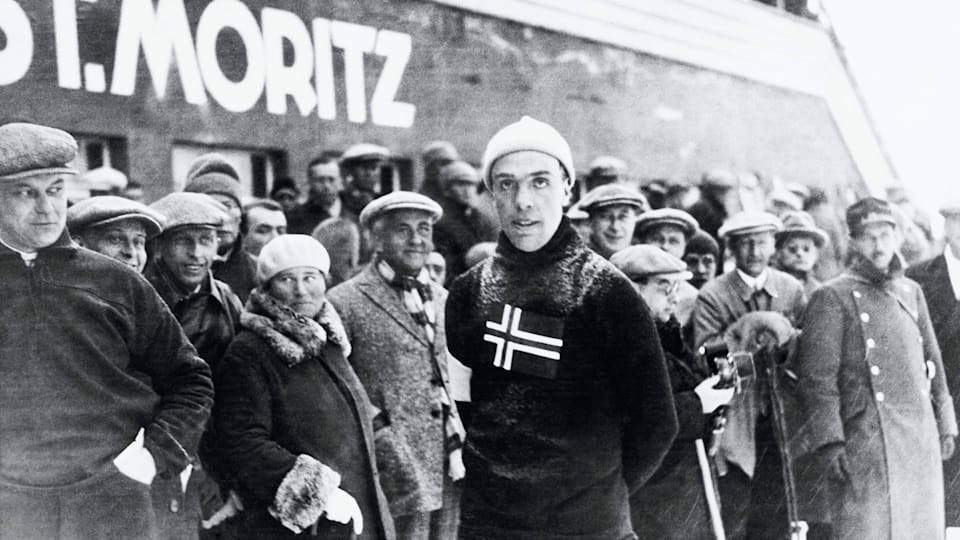Ballangrud hits the medal trail
Ivar Ballangrud was only 19 when he first got himself noticed on the international speed skating scene, though he made his arrival a little too late to earn a place at the inaugural Olympic Winter Games in Chamonix in 1924. One month later, however, the young Norwegian outskated newly crowned Olympic 10,000m champion Julius Skutnabb of Finland over the same distance at the World Allround Speed Skating Championships in Helsinki. Two years later Ballangrud won the first of his four titles and 11 medals in all at the world championships held on home ice in Trondheim.

Ballangrud warmed up for the St Moritz Games in 1928 by winning the 5,000m world title in Davos (SUI) in a near-world record time of 8:28.8, ending the championships by winning allround silver behind Clas Thunberg of Finland, a triple gold medallist at Chamonix 1924.
Held a few days after those world championships, the men’s 5,000m race at St Moritz 1928 took place in strong winds and heavy snow, with conditions on the ice worsening by the minute. Skating with Lithuania’s Kestutis Bulota, Ballangrud was the first of the favourites to take to the ice. Quickly into his stride, the powerful Norwegian lapped his opponent and crossed the line in 8:50.5, a time well short of the world record but one that would not be beaten by his rivals that day.
His compatriot Bernt Evensen got off to a faster start and led at every split up to 3,500m only to fall off the pace and finish more than 10 seconds adrift of the leader. Despite setting off at a more leisurely speed, the veteran Skutnabb nudged Evensen out of second position to become the oldest medallist in the sport at the age of 38 years and 246 days, with Ballangrud topping the podium, nearly nine seconds clear of the field.
In the following day’s 1,500m event, the Norwegian set a benchmark time of 2.22.6 for the final pair, formed by Thunberg and Evensen, to chase. The duo were more than up to the task, however, waging a superb duel to push Ballangrud down into third, with Thunberg taking gold in 2:21.1 and Evensen silver in 2:21.9.
Buoyed by his St Moritz double, Ballangrud then went on to dominate world speed skating in the 1930s, setting a host of world records at 3,000m, 5,000m and 10,000m, winning a string of world and European medals between 1930 and 1938, and adding to his Olympic medal collection.
After picking up 10,000m silver at Lake Placid 1932, he won golds in the 500m, 5,000m and 10,000m and a silver over 1,500m at Garmisch 1936, a haul no other athlete could match at those particular Games. His tally of seven Olympic speed skating medals has been equalled by only two other men: the great Thunberg and the Netherlands’ Sven Kramer, who pulled level with the pair at Sochi 2014.
